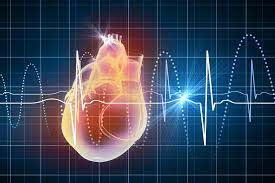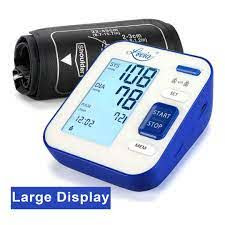Covering Points for Heart Rate Checkup | Cardio Check up:
- Method of Radial pulse
- Method of Carotid pulse
- Method of Pedal pulse
- Method of Brachial pulse
- Check with Assistive Device
- How to Target heart rates
- When to See the doctor
- The Takeaway

How to Check Your Heart Rate and (What is the Normal Heart Rate)- Image-1.jpg
Overview:

Actually the
number of times your heart beats in one the minute that measurement is called
heart rate.
Tip: Get your cardio check-up for free.
Tip: Get your cardio check-up for free.
Resting
Heart Rate is when your body idle or you are not doing any exercising or not
under stress at that time how many heartbeats you have per minute is called
your Resting Heart Rate. For the health or your heart muscles Resting Heart Rate can be an important measure.
For your
general health, it is very helpful to be able to check your own heart rate at
least, whenever you experience symptoms like dizziness or when you are exercising.
It may be
needed to check someone’s pulse or you may need to check your own child’s pulse
in an emergency situation after you have called the help from the area’s
medical emergency to check if the person needed CPR or not.
On your
Resting Heart Rate, your age, and fitness level always have a big impact. Your
heart rate can also, be affected by these following:
- Body position, such
as Sitting, Lying, or Standing
- Caffeine Intake
- Certain Medications
- Emotional State
- Thyroid Conditions or Underlying Heart
- Temperature
A number of
ways are there to check your pulse. I am here mentioning a few most common
methods:
Method of Radial pulse
 | |
|
If you want
to check your pulse with this method, you’ll find the radial artery.
1. Your need to place your pointer and your
middle fingers on the inside of your hand’s opposite wrist just below the
thumb.
2. You should never use your thumb to check your pulse because the in
your thumb can make it a bit harder to count accurately.
3. When you are able to feel your pulse, just count in 15 seconds how
many times it beats.
4. Then to get your heart rate you need to multiply this number with
4. The outcome will be your heart rate. For example: if you get 20 beats in
just 15 seconds then it equals to a heart rate of 80 beats per minute i.e.;
(BPM)
Method of Carotid pulse
If you want
to check your pulse with this method, you’ll find the carotid artery.
1. For this, you need to place your pointer
and middle fingers on the side of your windpipe, it is just below your jawbone.
It maybe needs to shift your fingers unless you are able to feel your heart
beating easily.
2. Again count the counts of your pulse in
these 15 seconds.
3. Again to check your heart rate you need to multiply this obtained
count with 4, and then it will be your heart rate.
Method of Pedal pulse
 |
| How to Check Your Heart Rate and (What is the Normal Heart Rate)-Pedal pulse image-1.jpg |
It is also
possible to find the pulse on the top of your foot. That is called the pedal pulse.
1. For this, your index and middle fingers should be placed above the
highest point of that bone that runs along the top of your feet. It may be
needed to move your fingers along the bone or side so that you can feel the
pulse.
2. When you have found your pulse, count the beats in 15 seconds.
3. You need to multiply the result with 4 to get your heart rate.
That’s how you can measure your heart rate with the help of Pedal
Pulse’s Method.
Method of Brachial pulse
 |
| How to Check Your Heart Rate and (What is the Normal Heart Rate)-Brachial pulse Image-1.jpg |
There is a
location to have your pulse checked, which is the brachial artery. We use this method to check the heart
rate of most commonly young children.
1. You need to turn your arm so that it’s slightly bent and your
inner arm faces up towards the ceiling.
2. For this place, your index finger & middle fingers along your
arm’s side between the crook of your elbow on the top side & the pointy
part of your elbow bone should be on the bottom side. Then you need to move
your fingers an inch up your arm. Also, you might need to press quite firmly in
order to feel your pulse.
3. Once you felt the pulse, start counting how many beats you get in
15 seconds.
4. Do multiplication of the occurred heart beats and 4 to get your
actual heart rate.
Check Your Heart Rate with an Assistive Device
 |
| How to Check Your Heart Rate and (What is the Normal Heart Rate)-Assistive Device BP Monitor Image-1 |
As the
technology is so advanced today, so there are so many devices that can measure
and tell you your heart rate instantly, as above :
- Smartphone Apps

How to Check Your Heart Rate and (What is the Normal Heart Rate)-Smartphone Apps to check heart rate image-1 - Digital Fitness Trackers
| How to Check Your Heart Rate and (What is the Normal Heart Rate)-Digital Fitness Trackers image-1.jpg |
- Exercise Machines
 |
| How to Check Your Heart Rate and (What is the Normal Heart Rate)-Exercise Machines image-1 |
- At-Home Blood Pressure Machines
 |
| How to Check Your Heart Rate and (What is the Normal Heart Rate)-At-Home Blood Pressure Machines IMage-1.jpg |
There is a device that checks your heart most accurately is the wireless monitor that strapped around the chest. It tracks out your
fitness tracker which you wear on your wrist.
Other
fitness trackers that we wear on our wrist like Smartphone apps and at-home blood
pressure machines are not that much accurate than checking your heart rate
manually. On the other hand, these devices are fairly ok and are very useful
when we are exercising.
Exercise
machines that have metal handgrips to measure your heart rate are most often
very inaccurate. If you want to check your heart rate while exercising is would
be the best way to check your heart rate manually or use a digital fitness
tracker to check your heart rate accurately.
What is your good heart rate?
Or
What is the Normal Heart Rate?
Heart rate norms are mostly based on age instead of
gender, although men mostly have slightly lower heart rates than the heart
rates of women.
Resting Heart Rate for Adults:
The normal or good heart rate for adults is 60 to 100 BPM. People
who all are very fit like athletes might have their resting
heart rates below 60 BPM.
Target heart rates:
To increase the efficiency of your workouts as well as to keep
you safe, target heart rates can be used. Typically, Exercising at 60 to 85
percent of your highest heart rate is always most beneficial for you.
Fat Burning or Interval Training:
Interval Training: -
When your heart rate goes
up and down is called Interval Training.
Doing exercise at the lower end of this percentage or we can say
doing Interval Training is ideal for fat burning. When
you exercise at the higher end of that percentage is always ideal for
building cardiovascular strength.
A simple equation to calculate your Heart Rate according to your
age:
In order to check your estimated maximum heart rate, you can use
this method of subtracting your age from 220.
Example: If your age is 33 Years. Then subtract this age from 220.Then your approximate maximum heart rate is 187 BPM (220 - 33 = 187).
Tip: To get the target heart rate while exercising you can use the maximum heart rate.
Here in the below chart, we are showing the estimated maximum
and a target heart rate for different age groups:
The chart below shows the estimated maximum and target heart
rates for various age groups:
Age |
Estimated maximum heart rate |
Target heart rate (60–85 percent of max) |
20
|
200
|
120–170
|
25
|
195
|
117–166
|
30
|
190
|
114–162
|
35
|
185
|
111–157
|
40
|
180
|
108–153
|
45
|
175
|
105–149
|
50
|
170
|
102–145
|
55
|
165
|
99–140
|
60
|
160
|
96–136
|
65
|
155
|
93–132
|
70
|
150
|
90–123
|
There is a way to get participation in a graded exercise test
performed by a doctor to determine the actual maximum heart rate and target
heart rates which will be the most accurate heart rate.
If you have been sedentary or have lung issues or have a history
of heart issues. Then it is always better to have a talk with a doctor before
starting any new exercise program.
When I should see the doctor?
Having a low heart rate consistently is called Bradycardia. If we
talk about healthy young adults and trained athletes, a low heart rate without
any other symptoms is the sign of very healthy heart muscles.
However, having a low heart rate can be taken as a sign of a
serious underlying problem. If you are experiencing chest
pain and having a heart rate of lower than 60 BPM, call your
emergency helpline. An in case if you are experiencing fainting, weakness, or
dizziness, or other concerning symptoms, call a doctor.
A consistently high heart rate of more than 100 BPM when you are
resting is known as Tachycardia. When you are exercising, stress, sick,
anxious, or had consumed caffeine then it is totally normal to have a high
heart rate.
If in case you are resting and having a heart rate of over 100
BPM, especially if you are also experiencing:
- Weakness
- Dizziness
- Sudden Anxiety
- Headache
- Palpitations
- Chest Pain
If you have these symptoms, then call a doctor.
The Takeaway
There a few methods with the help of which you can check your
heart rate at home. Knowing your resting heart rate may be useful as an
indicator of your heart health.
Also by knowing your target heart rate and check your heart rate
while exercising you can maximize your workout routine.
The time when a high or low heart rate accompanying other
symptoms becomes a sign of a serious underlying issue. You should call your
doctor if you experience this.








No comments:
Post a Comment
Please do not add any spam links in the comment box.